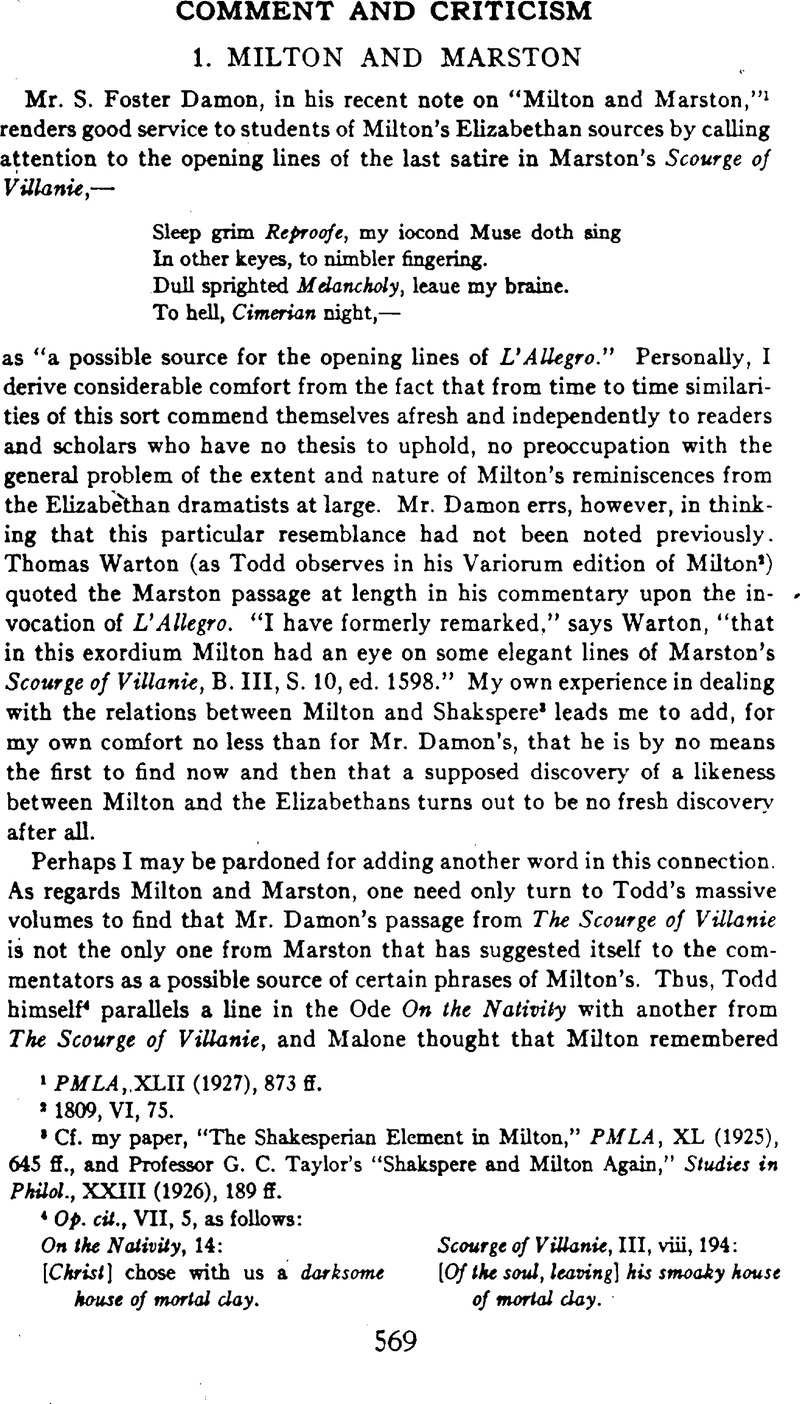No CrossRef data available.
Article contents
1. Milton and Marston
Published online by Cambridge University Press: 10 August 2021
Abstract

- Type
- Comment and Criticism
- Information
- Copyright
- Copyright © Modern Language Association of America, 1928
References
1 PMLA, XLII (1927), 873 ff.
2 1809, VI, 75.
3 Cf. my paper, “The Shakesperian Element in Milton,” PMLA, XL (1925), 645 ff., and Professor G. C. Taylor's “Shakspere and Milton Again,” Studies in Philol., XXIII (1926), 189 ff.
4 Op. cit., VII, 5, as follows:
On the Nativity, 14: [Christ] chose with us a darksome house of mortal clay.
Scourge of Villanie, III, viii, 194 : [Of the soul, leaving] his smoaky house of mortal clay.
5 Act V, Sc. 1 (Bullen's Marston, II, 412):
Cannot your trembling wires throw a chain
Of powerful rapture “bout our mazed sense. . . . . .
which lines Milton, according to Malone, remembered in L'Allegro, 142-144:
The melting voice through mazes running,
Untwisting all the chains that tie
The hidden soul of harmony.
(The verbal likeness here would seem to be worthy of note, though, as Warton observes, the thought differs. See Todd, VI, 104.)
6 See p. 649, n. 10.




